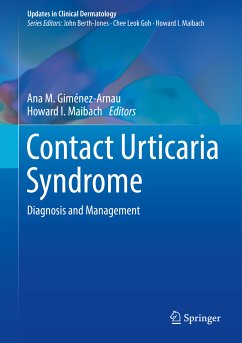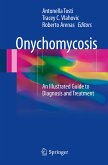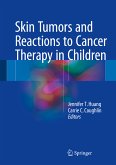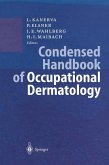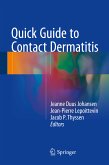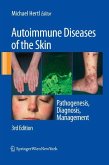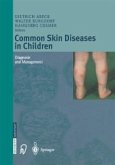Contact urticaria is an immediate but transient localized swelling and redness that occurs on the skin after direct contact with an offending substance. It is caused by a variety of compounds, such as foods, preservatives, fragrances, plant and animal products, metals, and rubber latex and the mechanism by which these provoke an immediate urticarial rash at the area of contact can be divided into two categories: non-immunological contact urticaria and immunological (allergic) contact urticaria. Non-immunological contact urticaria typically causes mild localized reactions that clear within hours, e.g. stinging nettle rash. This type of urticaria occurs without prior exposure of a patient's immune system to an allergen. Immunological contact urticaria occurs most commonly in atopic individuals (people who are prone to allergy). Hence prior exposure to an allergen is required for this type of contact urticaria to occur.
While there have been other texts written on the subject over the last decade, this book is intended as an easily accessible guide for dermatologists and residents, as well as general practitioners, summarizing the most important concepts that will help physicians identify the signs and symptoms of Contact Urticaria Syndrome in their daily clinical practice. Each chapter is laid out in the following format: Concepts, Tools and Algorithms of Diagnosis and Management, a Clinical Case for each entry, and Recommendations. Additionally, the Volume Editors have worked to provide a global approach to this syndrome using internationally standardized requirements for diagnosis.
Dieser Download kann aus rechtlichen Gründen nur mit Rechnungsadresse in A, B, BG, CY, CZ, D, DK, EW, E, FIN, F, GR, HR, H, IRL, I, LT, L, LR, M, NL, PL, P, R, S, SLO, SK ausgeliefert werden.

